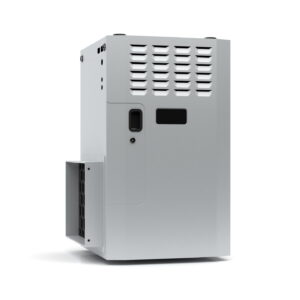A furnace does a lot of work through the long and cold winters in the Twin Cities. Even with the best maintenance, a furnace can still run into a malfunction that will weaken its heating ability or cause it to stop working altogether.
You never want to attempt to do any repairs on a furnace yourself—you’ll need to call the experts at Residential for heating repairs in Minneapolis, MN. We have many experiences dealing with all types of furnace malfunctions, and we know how to resolve them. Let’s look at five of the most common furnace problems we’re called on to fix. This list will help you better understand how your furnace works and what might cause it to stop working.
1. Ignition Problems
For decades, the way a gas furnace ignited the burners to start heating the air was with a standing pilot light. A few older furnaces still have these, but the newer models use more energy-efficient electronic ignition systems.
These systems are more dependable than pilot lights, but they can still fail, such as cracking because of heat. The furnace won’t turn on if the igniter isn’t activating the gas jets. You’ll need to have professionals put in a new igniter.
2. Faulty Flame Sensor
The reason a gas furnace will shut off if the igniter doesn’t light the burners is because of a safety device called the flame sensor. (In older furnaces, a simpler device called a thermocouple did the same job.)
If the flame sensor doesn’t detect that the gas jets have been lit, it will shut the furnace off to avoid flooding the combustion chamber with unburned gas. But if the flame sensor malfunctions, it will stop the furnace from turning on no matter what! Professionals can safely repair or replace the flame sensor.
3. Malfunctioning Blower Motor
The blower fan is responsible for pushing air from the return ducts through the furnace for it to be heated and then continue into the ductwork to the rooms. The motor that powers the blower can fail because of overwork or excess dust, and this sometimes starts with a tripped circuit breaker.
A failed blower motor will cause the furnace to soon overheat and trigger the load limit switch to shut the furnace down. Leave any work with the blower motor to HVAC experts.
4. Dirty Burners
Dust and debris can infiltrate the furnace cabinet (especially if the furnace filter is clogged) and coat the burners. This will make it harder for the burners to access enough oxygen and ignite. You’ll start to hear delayed ignition or the furnace won’t ignite at all because the flame sensor will keep shutting it off. Professionals can remove the burner assembly and clean it.
5. Electronic Malfunctions
Even gas burners rely on numerous electrical components to operate, such as the control board that allows the different parts to work in conjunction. Electrical failures are a common problem and will often cause the furnace to fail to turn on—or possibly fail to turn off. You only want technicians to work on complex electrical parts of your furnace.
Rely on Residential Heating and Air Conditioning and you’ll “Feel the Difference”! Serving The Twin Cities Since 1991.

